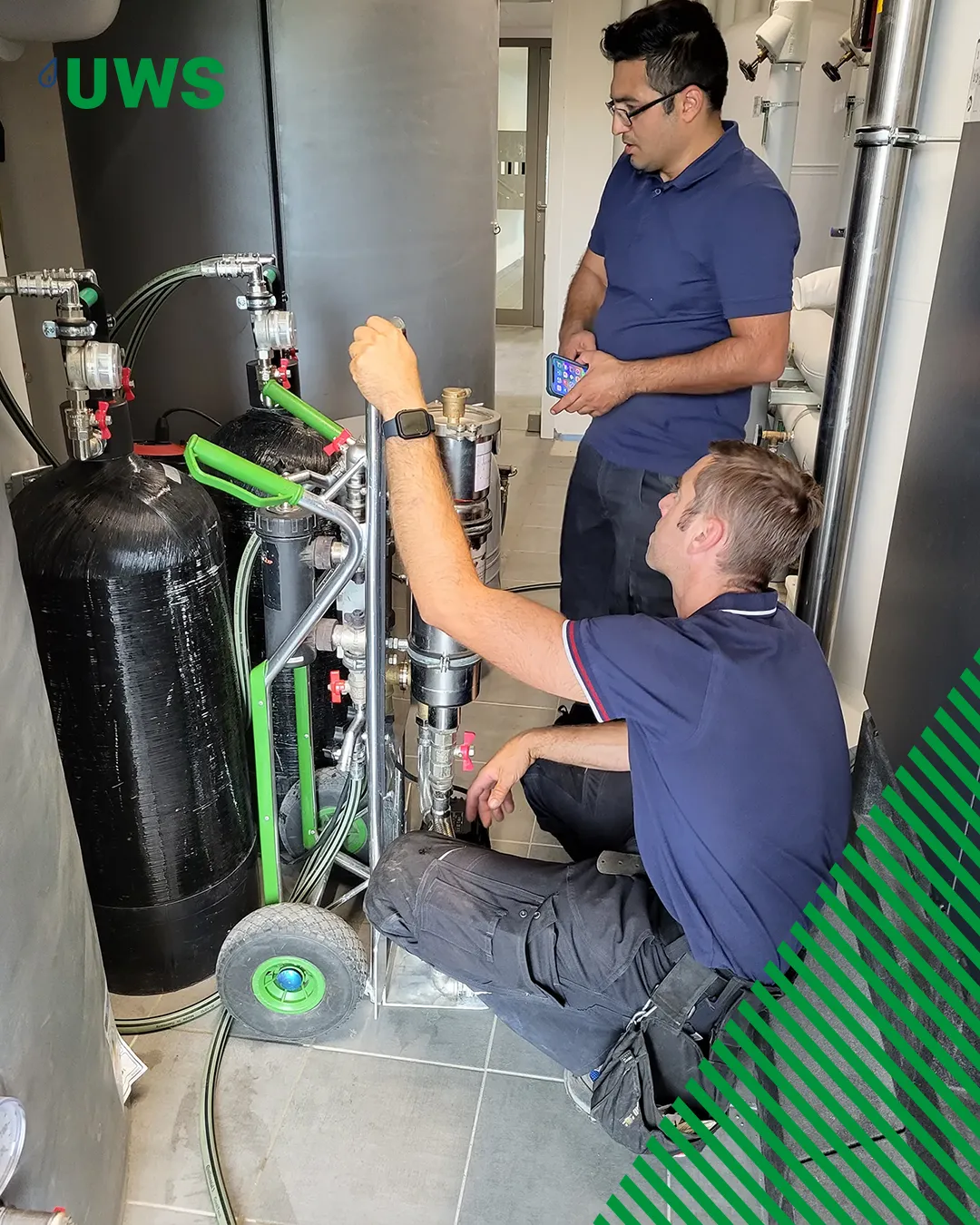Proper heating water treatment is essential
During installation, filling, and maintenance of heating systems, standards such as VDI 2035, ÖNORM H 5195-1, and SWKI BT 102-01 are of central importance. Heating water comes into contact with almost all components of the system and can cause significant damage – from oxygen ingress to sludge and lime deposits, up to corrosion. Proper treatment of heating water is therefore essential for trouble-free operation and a long service life of the system.
Typical types of damage such as scaling, corrosion, or magnetite often result from unsuitable heating water. The aforementioned standards therefore define clear reference values that not only ensure safe operation but also form the basis for warranty claims – an important aspect for planners, installers, and operators. If these requirements are not met, this can lead to refusal of commissioning, loss of warranty claims, and efficiency losses.
VDI 2035 distinguishes between water treatment (physical) and water conditioning (chemical). Treated water is softened and/or desalinated as well as freed from suspended matter and magnetite. In water conditioning, chemical inhibitors are added – according to the guideline, however, this is only permitted in exceptional cases.
Four main factors influence corrosion and scaling in the heating system:
water hardness
The water hardness, combined with the amount of fill and make-up water as well as the temperature of the heat generator, is primarily responsible for scaling. Hardness formers such as calcium, magnesium, chlorides, and sulfates lead to deposits and boiler scale – the higher the temperature, the greater the risk.
Dissolved gases
Excessive oxygen ingress inevitably leads to corrosion. What is critical is not the oxygen from the initial filling, but the oxygen that continuously enters the system through leaks or faulty pressure maintenance systems – such as incorrectly sized expansion vessels.
pH level
The pH value measures the acid or alkali content of the water. Since it is logarithmically scaled, a change of one unit means a tenfold increase in acid concentration. Without oxygen, decomposition occurs in the acidic range – depending on the material used.
conductivity
The higher the conductivity, the greater the risk of electrochemical corrosion. It is mainly influenced by dissolved salts. Inhibitors and oxygen binders also increase conductivity. Low conductivity has a corrosion-inhibiting effect.
Methods for heating water treatment
VDI 2035 recommends softening or desalination for treatment:
Softening
In this process, calcium and magnesium are replaced by sodium. This prevents scaling but does not reduce conductivity – in fact, conductivity may slightly increase due to sodium. Chlorides and other anions remain in the water.
Desalination
In desalination, both cations and anions are removed. This significantly reduces conductivity, which effectively prevents corrosion and scaling. Advantages include, among other things, a higher heat capacity, lower risk of corrosion, and compliance with all manufacturer specifications.
How is heating water treated?
Full desalination with mixed-bed resin
Special mixed-bed resins such as the UWS Vadion pH-Control enable desalination to below 100 µS/cm and automatically adjust the pH value to the recommended range (8.2–10.0 for stainless steel, 8.2–9.0 for aluminum). Use is also possible during ongoing operation in the bypass process.
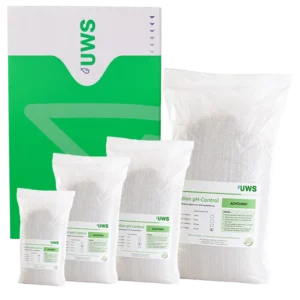
Mixed bed resin Vadion pH-Control
Our Vadion pH-Control is a mixed bed resin that not only desalinates the water to < 100 μS/cm (equivalent to 0-2 °fh) but also ensures that the pH value of the filling water is within the required range.To the product
Mobile treatment devices
There are suitable devices for every system size – from small apartment heating systems to large district heating networks. Modern systems operate bivalently: they soften, desalinate, and filter at the same time. This allows all relevant standards to be met in a single step. Important in planning: include shut-off options for maintenance work so that the entire system does not have to be drained.
Treated make-up water with make-up unit
Both fill and make-up water must now be treated in accordance with standards. A permanently installed make-up system ensures automatic protection and standard-compliant water quality. EN 1717 also requires the installation of a system separator to protect drinking water. Pre-assembled make-up units already contain all necessary components such as system separators, water meters, and shut-off valves.
Cloud-based make-up – efficiency reimagined
Cloud-based, fully automatic make-up systems are a technological advancement that significantly simplifies the operation of heating and sanitary systems. By integrating modern cloud technologies, operators can monitor the status of their systems at any time and from any location. The make-up system automatically notifies the operator of alarm messages and necessary cartridge replacements. This not only provides greater operational reliability, but also enables more efficient scheduling of maintenance operations and avoids unnecessary service calls.
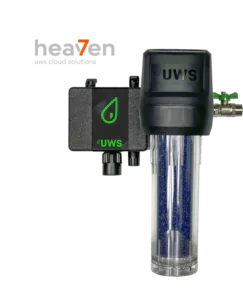
Heaty Complete Professional
Heaty Complete PROfessional is the world’s first smart IoT make-up system, including Cloud connection – fully automatic, leakage protection and digital water meter.To the product
Degassing
Water contains dissolved gases that change depending on pressure and temperature: they dissolve or emerge as air bubbles. If a heating system is not operated for a longer period, gas solubility decreases – resulting in an increased formation of air bubbles. Air can also enter the system during maintenance work or through leaking seals. Mobile degassing systems offer an efficient solution here: they significantly reduce the effort required for manual venting during boiler replacement, thus saving time and costs. For recurring air problems – such as those caused by microbubbles – a device like the UWS Heaty VAC can be used flexibly to ensure reliable degassing.
Filtration
In addition to softening and desalination, filtration is also part of heating water treatment. It removes particles, dirt, and deposits down to a size of 1 µm. This protects pumps and heat exchangers from clogging, improves heat transfer, and reduces material wear as well as the risk of microbial contamination. With devices such as the Heaty Profiline, even contaminated systems can be cleaned in bypass with correct pH and conductivity values – without draining the system.

Heaty Profiline No. 2
Complete unit for professional bypass preparation, magnetite filtration and filtration incl. Hot water pumpTo the product
Magnetic flux filter
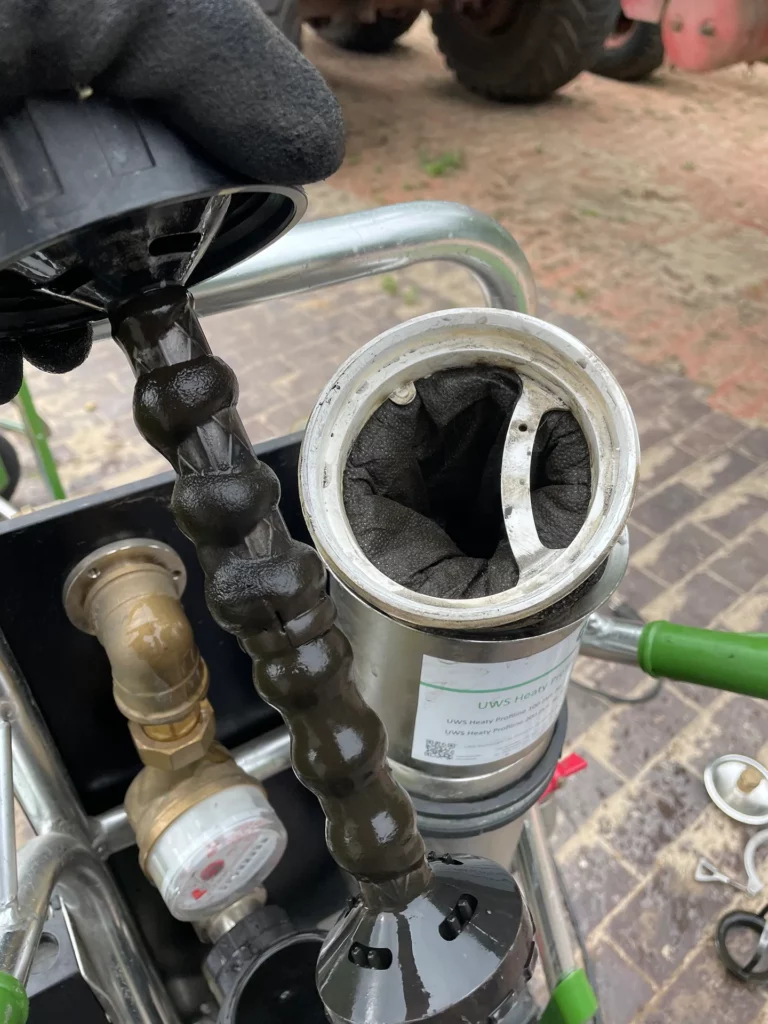
Magnetite (iron oxide) is magnetic and can cause significant damage in modern heating systems. Electromagnetic fields in pumps attract the fine black sludge, which leads to cold radiator zones, efficiency losses, and increased energy consumption. Even small amounts of magnetite impair the efficiency of condensing boilers. Magnetic flow filters, such as those of the UWS MAGella series, remove almost 100 % of the circulating iron oxide sludge. Their special design ensures maximum filter performance from the very first pass – for year-round protection, lower heating costs, and an extended service life of the system.

MAGella MG 200
The MAGella MG 200 magnetite and sludge separator mounted on the return pipe of the boiler protects the system from all types of contamination.To the product
Measuring technology for heating water analysis
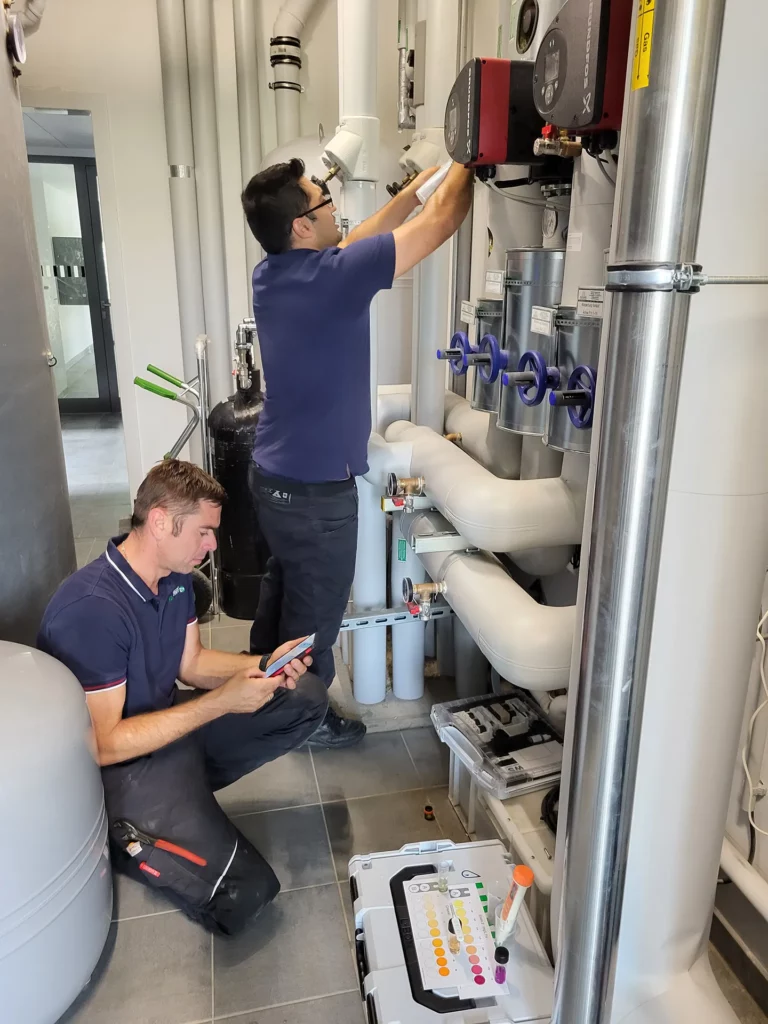
Modern measuring devices are indispensable for professional tradespeople. They enable precise analysis and documentation of parameters such as pH value, conductivity, magnetite, chloride, and iron content – essential for tracking initial filling, replenishment, and maintenance. The system separator for protecting drinking water must also be checked annually – for tightness, opening behavior, venting, and backflow prevention.
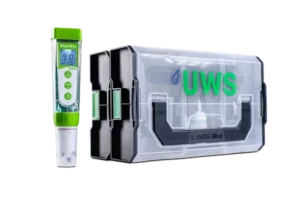
WaterBoy measuring case
The UWS WaterBoy measuring case contains everything the HVAC specialist needs to measure data in accordance with the VDI 2035, ÖNORM H 5195-1 and SWKI BT 102-01 standards in two L-BOXXES.To the product
Areas of application for UWS devices
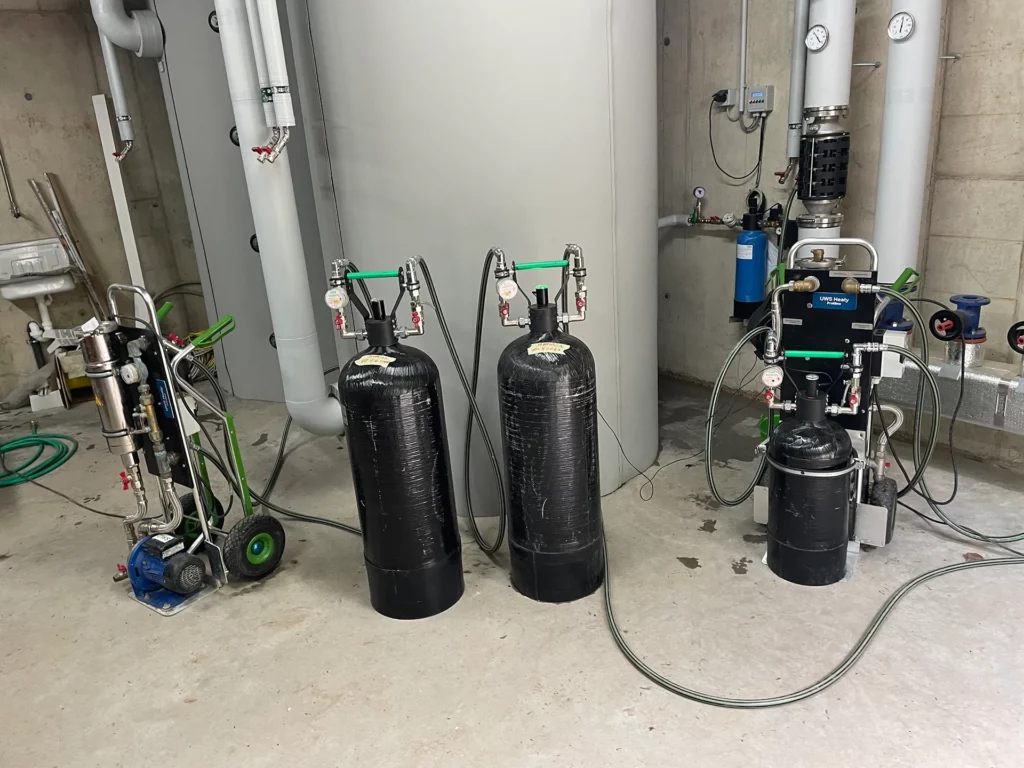
UWS treatment devices can be used flexibly:
- For filtration in the ongoing heating or cooling circuit
- For water treatment during initial filling or in bypass
- For combined filtration and treatment in the bypass process
In bypass mode, a partial flow is routed through the device. For optimal results, the system pumps should be active. The connection is ideally made at the return line. If there is no second return line, the supply line can also be used.
Filling with replenishment units
Before each initial filling, a thorough flushing of the system is necessary – especially for underfloor heating, to remove air and installation residues. If flushing is carried out directly via a replenishment unit instead, unnecessarily large amounts of water are treated. In addition, the mixed bed resin lacks the necessary contact time. Digital replenishment units such as Heaty Complete Advanced or PROfessional control the process electronically and are also suitable for initial filling.
Avoid typical mistakes
- Incorrect flow direction when connecting the bypass leads to insufficient treatment.
- Replace mixed bed resin in good time – at least every 2 years.
- Thoroughly flush the system before treatment, especially when using additives such as glycols or cleaners.
- Clean or replace fine filters regularly.
- Flush pipes before commissioning, to avoid contamination.
- Always install system separators according to EN 1717 correctly.
You can find a practical online tool for calculating resin capacity here: UWS calculation tool.
Customer benefits of heating water treatment
Untreated heating water can lead to scaling, corrosion, and loss of warranty. Manufacturers may even refuse commissioning. With optimally treated water:
- the heating system operates more efficiently
- energy consumption decreases
- repairs become less frequent
- maintenance and operating costs are reduced
- the high-efficiency pump is protected
- the service life of the system is extended
- CO₂ emissions decrease


